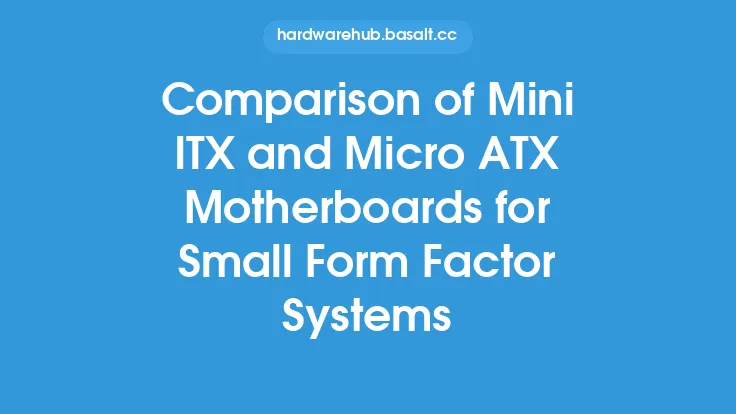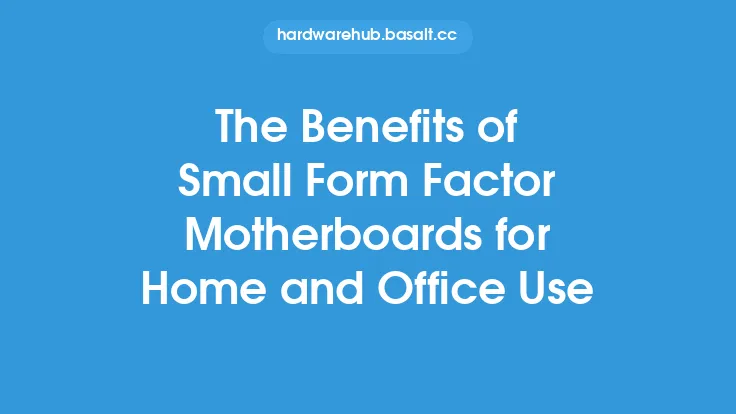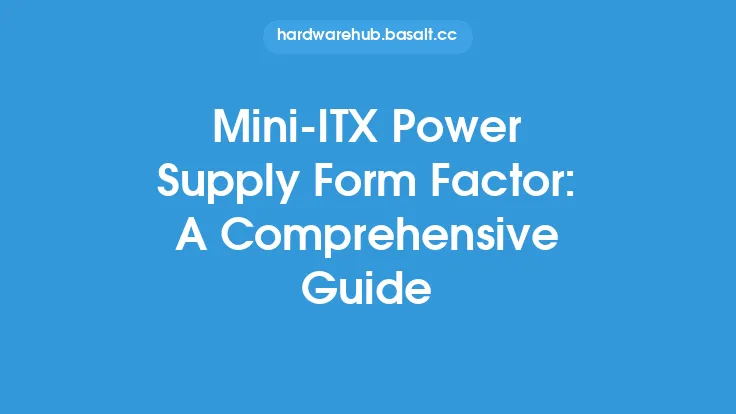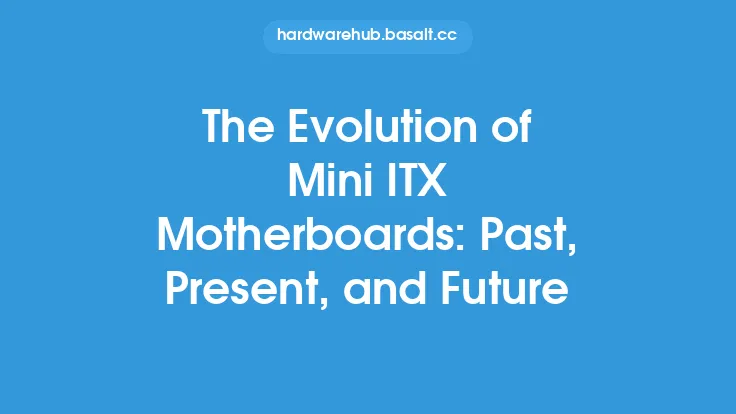When it comes to building a small form factor (SFF) computer, one of the most critical components to consider is the motherboard. Among the various options available, Mini ITX motherboards have gained popularity due to their compact size, versatility, and impressive feature set. In this article, we will delve into the advantages of Mini ITX motherboards for SFF builds, exploring their benefits, technical aspects, and applications.
Introduction to Mini ITX Motherboards
Mini ITX motherboards are designed to provide a compact and efficient platform for building small form factor computers. Measuring 6.7 inches (17 cm) square, these motherboards are significantly smaller than their ATX counterparts, making them ideal for SFF builds. Despite their compact size, Mini ITX motherboards offer a wide range of features, including support for the latest processors, memory, and storage technologies. They are also highly versatile, allowing users to build a variety of systems, from basic home PCs to powerful gaming rigs.
Space-Saving Design
One of the primary advantages of Mini ITX motherboards is their space-saving design. By using a smaller form factor, these motherboards enable builders to create compact systems that can fit into tight spaces, such as home theaters, living rooms, or even industrial environments. The compact size also makes them ideal for building portable systems, such as gaming laptops or all-in-one PCs. Additionally, the smaller form factor reduces the overall weight of the system, making it easier to transport and handle.
Power Efficiency
Mini ITX motherboards are designed to be power-efficient, which is essential for SFF builds. By using a smaller form factor, these motherboards require less power to operate, resulting in lower energy consumption and heat generation. This is particularly important for systems that need to run 24/7, such as home servers or industrial control systems. Furthermore, the reduced power consumption also leads to cost savings, as users can enjoy lower electricity bills and extended component lifespan.
Component Compatibility
Despite their compact size, Mini ITX motherboards offer excellent component compatibility. They support a wide range of processors, including Intel Core and AMD Ryzen series, as well as various memory and storage options, such as DDR4 RAM and NVMe SSDs. Additionally, many Mini ITX motherboards feature multiple expansion slots, including PCIe x16 and PCIe x1, allowing users to add graphics cards, sound cards, and other peripherals. This compatibility ensures that users can build a system that meets their specific needs and budget.
Cooling and Thermal Management
Mini ITX motherboards often require specialized cooling solutions due to their compact size. However, many modern Mini ITX motherboards feature advanced thermal management systems, including heat sinks, heat pipes, and fan headers. These systems help to dissipate heat efficiently, ensuring that the system runs smoothly and reliably. Additionally, some Mini ITX motherboards feature low-power components and optimized power delivery, which further reduces heat generation and improves overall system reliability.
Applications and Use Cases
Mini ITX motherboards are versatile and can be used in a variety of applications, including home PCs, gaming systems, home theaters, and industrial control systems. They are also popular among DIY enthusiasts and makers, who appreciate their compact size and flexibility. In addition, Mini ITX motherboards are used in various embedded systems, such as robots, drones, and other IoT devices, where their small size and low power consumption are essential.
Technical Considerations
When building a system with a Mini ITX motherboard, there are several technical considerations to keep in mind. One of the most critical factors is the choice of processor, as it will significantly impact the system's performance and power consumption. Additionally, users need to consider the memory and storage options, as well as the expansion slots and peripherals. It is also essential to ensure that the system has adequate cooling and thermal management, as the compact size can lead to heat buildup and reduced system reliability.
Conclusion
In conclusion, Mini ITX motherboards offer a wide range of advantages for small form factor builds, including their compact size, power efficiency, component compatibility, and advanced thermal management systems. Their versatility and flexibility make them an excellent choice for various applications, from home PCs to industrial control systems. By understanding the technical considerations and benefits of Mini ITX motherboards, users can build reliable, efficient, and high-performance systems that meet their specific needs and budget. Whether you are a DIY enthusiast, a gamer, or an industrial user, Mini ITX motherboards are an excellent option for building compact and powerful systems.





